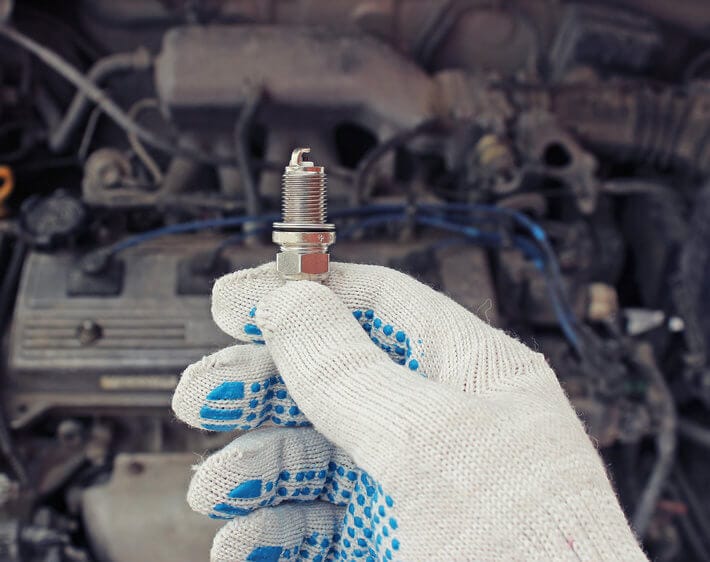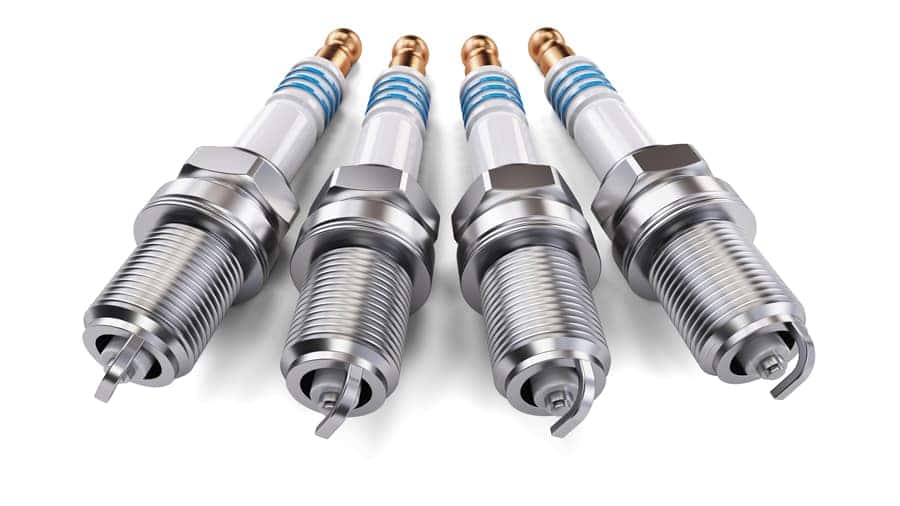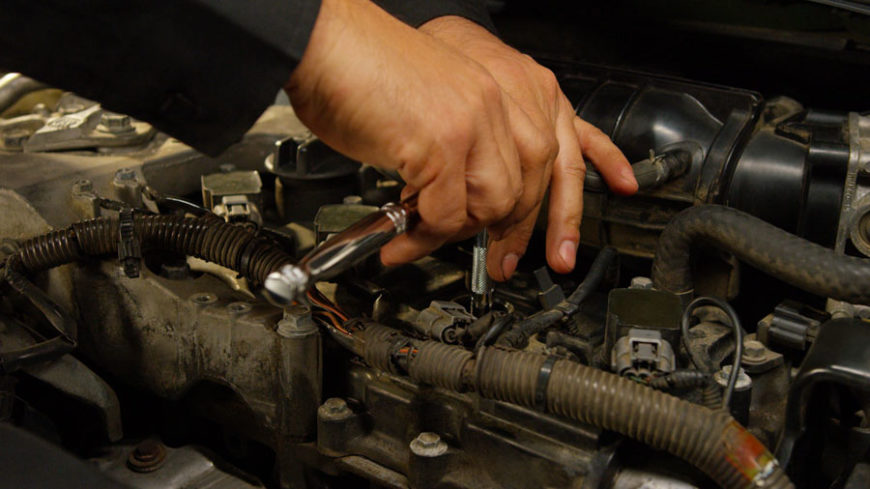5 Best Ways to Replace Spark Plugs
To replace spark plugs, gather necessary tools, locate and remove old plugs, install new plugs tightly, then test ignition system. Spark plug replacement is a crucial maintenance task to ensure the optimal performance of your vehicle.
Over time, spark plugs wear out, causing inefficient fuel combustion, which can lead to decreased engine power and decreased fuel efficiency. By following the proper steps to replace spark plugs, you can restore your engine’s performance, improve fuel economy, and prevent potential issues related to ignition system malfunction.
In this guide, we will explore the best ways to replace spark plugs effectively and keep your vehicle running smoothly.

Credit: www.firestonecompleteautocare.com
Preparation
Before diving into the process of replacing spark plugs, it is crucial to prepare yourself and gather the necessary tools. Along with this, ensuring safety measures should be your top priority to prevent any mishaps or accidents during the task. This section will guide you through the process of preparing for the spark plug replacement, so you can carry out the task efficiently and confidently.
Gathering Necessary Tools
Gathering the necessary tools is the first step towards successfully replacing your spark plugs. Having the right tools handy will make the task much easier and save you time.
Here’s a list of essential tools you will need:
- Socket wrench with an extension
- Spark plug socket
- Spark plug gap gauge
- Torque wrench
- Dielectric grease
- Anti-seize compound
- Clean cloth or rag
Ensuring Safety Measures
Ensuring safety measures is imperative when working with any vehicle components. Before replacing your spark plugs, consider the following safety precautions:
- Make sure your vehicle’s engine is cool to avoid any burns or injuries.
- Wear safety goggles or glasses to protect your eyes from debris or sparks.
- Disconnect the battery to avoid any electrical mishaps.
- Read the vehicle’s manual or consult with a professional for specific instructions.
- Work in a well-ventilated area to prevent inhaling harmful fumes.
Remember, taking these safety measures will not only protect you but will also help you perform the spark plug replacement smoothly and without any interruptions.

Credit: www.bmwofreading.com
Method 1: Basic Replacement
Locating and Accessing Spark Plugs:
- Find the spark plugs near the engine.
- Look for a row of wires leading to each spark plug.
- Identify the cylinders to access the spark plugs.
Removing and Replacing Spark Plugs:
- Detach the wire from the spark plug carefully.
- Use a socket wrench to unscrew the spark plug.
- Ensure the gap is correct for new spark plugs.
Method 2: Coil-on-plug Replacement
When replacing spark plugs, another effective method is Coil-On-Plug Replacement.
Identifying Coil-on-plug System
- Look for individual coils on top of each spark plug.
- Coil-On-Plug system eliminates the need for spark plug wires.
Removing And Installing New Coil-on-plug Units
- Disconnect the electrical connector from the coil.
- Remove the mounting bolt that secures the coil.
- Gently pull the old coil out of the spark plug well.
- Install the new coil by pressing it firmly into place.
Method 3: Long-reach Spark Plug Replacement
When it comes to replacing spark plugs, it’s important to consider the specific needs of your vehicle. In some cases, a long-reach spark plug may be necessary. This method is typically used for engines with deep or hard-to-reach spark plug wells. By choosing the correct long-reach spark plugs and utilizing extension tools, you can easily and effectively replace your spark plugs, ensuring optimal engine performance. Let’s dive into the details of this method.
Choosing Correct Long-reach Spark Plugs
If you’re planning to replace your spark plugs using the long-reach method, it’s essential to choose the correct long-reach spark plugs for your vehicle. These spark plugs are designed with an extended reach to fit into the deep spark plug wells, reaching the combustion chamber without any issues.
To choose the correct long-reach spark plugs, you’ll need to consider the specifications recommended by your vehicle manufacturer. Refer to the owner’s manual or consult a trusted mechanic to determine the correct spark plug type, size, and heat range required for your specific engine.
Once you have the correct specifications, you can purchase the appropriate long-reach spark plugs from an automotive store or online retailer. Make sure to double-check the specifications before making your purchase to ensure compatibility with your vehicle.
Using Extension Tools For Replacement
When it comes to the actual replacement process, using extension tools is crucial for reaching the spark plugs in deep or hard-to-reach areas. These tools allow you to access the spark plug wells with ease, making the replacement process more efficient.
Depending on your vehicle’s design and the accessibility of the spark plugs, you may need a variety of extension tools, such as socket extensions, swivel adapters, or flexible extensions. These tools come in different lengths and angles to accommodate different spark plug well placements.
Before starting the replacement, gather the necessary extension tools and ensure they are compatible with your spark plug socket. Insert the extension tool into the socket, making sure it is securely connected.
Next, position the extension tool and socket over the spark plug. Apply steady downward pressure while turning counterclockwise to loosen the spark plug. Once the spark plug is loosened, remove it carefully using the extension tool.
When installing the new long-reach spark plug, reverse the process. Insert the spark plug into the socket attached to the extension tool, align it with the spark plug well, and carefully thread it in by turning clockwise. Use the extension tool to apply the final torque, ensuring not to overtighten.

Credit: www.autozone.com
Frequently Asked Questions Of 5 Best Ways To Replace Spark Plugs
What Is The Best Way To Change Spark Plugs?
To change spark plugs, first, locate them on the engine. Next, disconnect the plug wire and remove the old spark plug. Then, gap the new spark plug and tighten it into place. Finally, reconnect the plug wire and repeat for the remaining plugs.
What Else Can You Replace Spark Plugs With?
You can replace spark plugs with iridium, platinum, or double platinum plugs for improved performance. Upgrading to these types of plugs can provide better ignition and longevity for your engine.
In What Order Should You Replace Spark Plugs?
Replace spark plugs in the following order: one at a time, starting from one end of the engine to the other. This ensures proper ignition and prevents misfires. Regular replacement every 30,000 miles or as recommended by the vehicle manufacturer is crucial for optimal performance.
What Should You Not Do When Changing Spark Plugs?
Avoid these mistakes when changing spark plugs: 1. Over-tightening them, 2. Cross-threading the plugs, 3. Using incorrect spark plug type, 4. Ignoring torque specifications, 5. Skipping anti-seize lubricant application.
Conclusion
To sum it up, replacing spark plugs is a crucial aspect of vehicle maintenance. By following these five steps, you can ensure the smooth functioning of your engine, improve fuel efficiency, and reduce emissions. Whether you’re a DIY enthusiast or a novice, these recommendations will simplify the process and save you time and money.
Don’t neglect this routine maintenance task, as it can go a long way in extending the lifespan of your vehicle. Happy plug replacing!


